This travel wiki page of Slovenia will help guide travelers with quick and relevant information to consider when planning and visiting the country. It is difficult to find all the relevant information on Slovenian culture, safety, travel restrictions, and things to do, so we summarize it all here. If anything is stale or outdated, please let us know! Let’s dive in and explore more high-level information as a Slovenia trip planner.
Last updated July 3rd of 2023.
Slovenia Travel Planner Table of contents
National Information & Culture

Slovenia, officially the Republic of Slovenia, is in southern Central Europe. It shares borders with Italy to the west, Austria to the north, Hungary to the northeast, Croatia to the southeast, and the Adriatic Sea to the southwest. Despite its small size of just over 20,000 square kilometers, Slovenia boasts a remarkable variety of landscapes, from the Julian Alps to lakes, lush green forests, and towns. The country’s capital and largest city is Ljubljana, known for its architectural beauty and vibrant atmosphere, and the official currency is Euro (€).
A developed country with a high-income economy, Slovenia’s primary industries include tourism, manufacturing, and services. Tourism is crucial to the country’s economy, attracting visitors with its natural wonders, outdoor activities, and cultural experiences. Moreover, Slovenia is a member of the United Nations, the European Union, the Eurozone, the Schengen Area, the OSCE, the OECD, the Council of Europe, and NATO.
Slovenia’s rich cultural heritage is deeply rooted in its location at the crossroads of different European cultures. One notable aspect is the Slovenian sense of time. Slovenians value punctuality, and arriving on time for appointments, meetings, or social gatherings is customary.
Another cultural difference that might surprise visitors is the ‘silent hours’ practice, particularly during weekends and afternoons. In residential areas, it is common for people to observe a period of silence, where loud noises and disturbances are avoided to maintain a peaceful atmosphere.
Visit the Official Tourism Website of Slovenia for more tips and information when planning your trip.
Special Travel Considerations
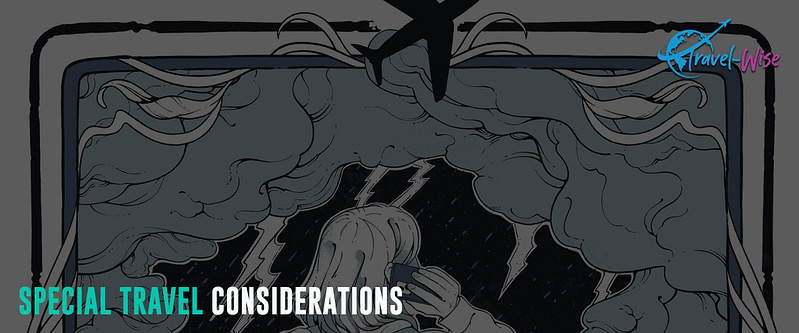
Each country and destination has rules and regulations that every traveler must consider. Hence, check the following considerations for hassle-free travel to Slovenia.
Covid-19 Policy
As of May 31, 2022, there are no Covid-19 restrictions on entering Slovenia. However, the Covid-19 protocol of Slovenia may vary over time with the evolution of the pandemic. Hence, check the latest situation and border crossing requirements before leaving.
Travel Insurance
Generally, travel insurance is a mandatory requirement for visa applications to the Schengen country areas. The insurance policy must include coverage for at least €30,000 for medical emergencies. It should also cover every country in the Schengen area for the trip. Travel insurance can protect you against the inconvenience of injury, medical emergencies, theft, and flight cancellations. In addition, it is comprehensive protection in case anything goes wrong with your trip.
Moreover, Slovenia recommends taking a tourist insurance policy that covers various types of transport, medical care at private practices, and similar services not covered by the European Health Insurance Card (EHIC).
Visa Information

Slovenia is a European Union (EU) member and part of the Schengen Area. Hence, its visa policy applies to Slovenia.
Generally, citizens of the EU and or European Economic Area (EEA) member states are visa-exempt when traveling to Slovenia. They only need a valid passport or identity card. In addition, nationals from 62 countries may enter the Schengen area for 90 days (within 180 days) without a visa. Please note that stays are cumulative and include visits to any Schengen area country.
Contrarily, third-country nationals must acquire a visa or a residence permit from a diplomatic mission abroad before they arrive in the Republic of Slovenia. Slovenia also supports the updating of the visa system at the EU level. It introduces online visa applications available in third countries, where the application procedure goes through visa centers. Secondly, Slovenia plans to discontinue visa stickers and use electronic visas instead. However, until further notice, applicants must print out the visa form and lodge it at embassies or visa centers.
In addition to visas, visitors should have at least three months of a valid passport beyond their planned departure date from the Schengen area. But as a general rule, it is best to have at least six months’ valid passport when traveling to any country.
Visit the immigration policy from the Republic of Slovenia’s official web page to learn more about the country’s visa and entry policies.
ETIAS
The European Union will implement European Travel Information and Authorisation (ETIAS) starting in 2024. It is to boost security across the Schengen zone. ETIAS will be a mandatory requirement for visitors from visa-exempt countries.
ETIAS is a travel permit or a visa waiver program in which all visitors, regardless of age, traveling to the Schengen counties must apply individually at least 96 hours before departure. It will be a multiple-entry permit valid for three years or until the passport expires (whichever comes first) and can be used to visit all ETIAS member countries.
As of this writing, the European Travel Information and Authorisation System (ETIAS) is currently not operating and does not accept applications for travel authorizations. However, applicants can apply via an official website or app for mobile devices before ETIAS is implemented. The date travelers can apply for ETIAS will be published on this website, Europa Home Affairs. You can also find more information on the official ETIAS website of the European Union.
Popular Attractions
Slovenia boasts many captivating tourist attractions, ranging from natural wonders to charming historical sites. It is also known for its mountains, lakes, and picturesque beauty.
Lake Bled
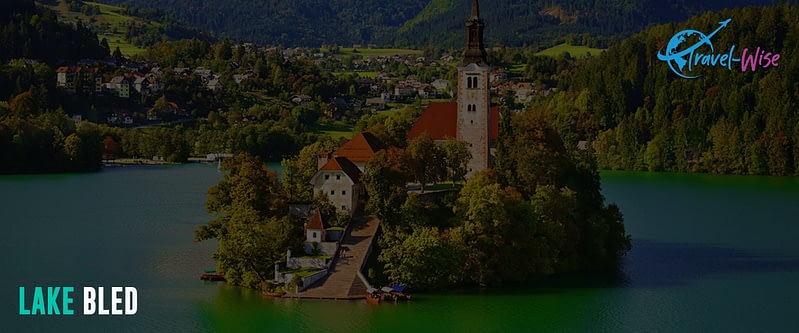
Amidst the Julian Alps, Lake Bled is a postcard-perfect destination. Lake Bled is home to the iconic Bled Island with its picturesque church and the medieval Bled Castle perched on a cliff. These, and the serene beauty, make it one of Slovenia’s most popular attractions. Moreover, Lake Bled is distinguished by a mild, healing climate and thermal springs of lake water.
Lake Bled serves as a gateway to the Triglav National Park, with Bled Island in the middle of the lake. The island is accessible by traditional wooden pletna boats and is famous for the 17th-century Assumption of Mary Church. The church features charming Baroque architecture and a distinctive bell tower, an iconic symbol of Bled and a must-visit attraction. Visitors can climb the 99 stone steps for panoramic views, ring the “wishing bell” for good luck, and explore the peaceful surroundings.
Other tourist activities on Lake Bled include horseback riding and rowboat rental to explore the water.
Postojna Cave
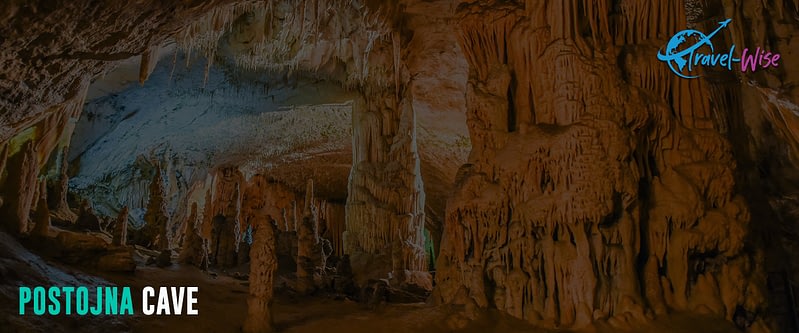
Postojna Cave is one of the world’s most extensive cave systems, offering a captivating subterranean adventure. Visitors can take a guided tour to explore the remarkable geological formations and hidden chambers beneath the surface.
The cave’s vast halls feature stunning stalactite and stalagmite formations that nature has sculpted over millions of years. A significant highlight of the Postojna Cave is a tour via the underground railway built more than 140 years ago. Throughout the tour, knowledgeable guides provide fascinating insights into the cave’s geological history, its delicate ecosystem, and the intriguing creatures that call it home. The cave is inhabited by the olm, also known as the “human fish,” a rare and unique amphibian species adapted to its underground environment.
In addition to the main cave, visitors can also explore the nearby Predjama Castle, a beautiful medieval fortress built into the mouth of a cave. This architectural wonder offers a glimpse into the region’s rich history and provides a captivating contrast to the cave’s natural beauty.
For those seeking a bit of adventure, Postojna Cave offers specialized experiences like cave rappelling or spelunking. The cave complex also includes visitor facilities such as a restaurant, gift shops, and educational exhibits that provide further insights into the cave’s geological and biological wonders.
Škocjan Caves
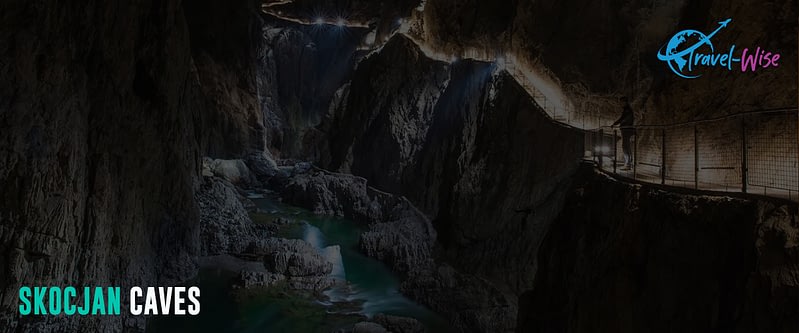
A UNESCO World Heritage Site, Škocjan Caves is renowned for its awe-inspiring underground caverns and unique natural formations. The caves are known for their exceptional size and extraordinary geological features, a must-visit attraction for nature and adventure enthusiasts. It offers an underground adventure that takes visitors through vast caverns, majestic halls, and an underground river. Visitors can walk along the suspended bridge and admire the underground river and stunning limestone formations.
The highlight of Škocjan Caves is the Great Chamber, a colossal underground hall that stretches over 100 meters in height. The cave features stalactites, stalagmites, and massive limestone formations shaped by nature over millions of years. Another remarkable feature of Škocjan Caves is the Reka River, flowing through the underground chambers and creating a subterranean landscape.
The caves offer guided tours, providing informative insights into the geological and ecological wonders of the site. Knowledgeable guides also share fascinating stories about the caves’ history, formation, and diverse ecosystems.
Aside from the cave system itself, Škocjan Caves are surrounded by lush forests, cliffs, and rolling hills, offering excellent opportunities for nature walks and hiking. For those interested in local culture and history, the Škocjan Caves Regional Park features an exhibition center where visitors can learn about the region’s geological significance and the cave’s place in Slovenian heritage.
Soča Valley
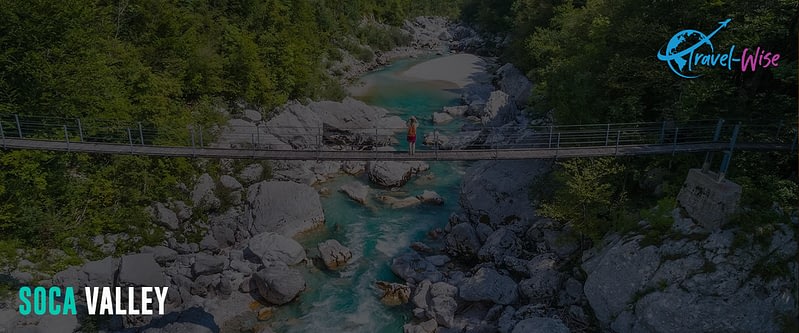
The Soča Valley, named after the emerald-green Soča River, is a breathtaking tourist destination known for its pristine natural beauty and outdoor adventures. The valley is characterized by its crystal-clear waters, lush greenery, and majestic mountains, a paradise for nature lovers and outdoor enthusiasts.
One of the main attractions of the Soča Valley is the Soča River itself. Visitors can hike alongside the river, go whitewater rafting, kayaking, or canyoning, and navigate through the rapids and narrow gorges. The Soča Valley also offers a wide range of well-marked trails for different skill levels, where hikers can discover hidden waterfalls, alpine meadows, and breathtaking viewpoints.
For history buffs, the Soča Valley holds significant World War I heritage. The area was a fierce battleground known as the Isonzo Front, and remnants of trenches, forts, and war memorials can still be found. The Kobarid Museum provides a comprehensive insight into the history of the region.
The Soča Valley is also home to charming alpine villages like Bovec and Kobarid. Visitors can immerse themselves in the local culture, savor traditional cuisine, and explore the historical sites. Moreover, the valley is home to rare species. It includes the protected marble trout, chamois, and bird species such as eagles, falcons, and owls.
Ljubljana
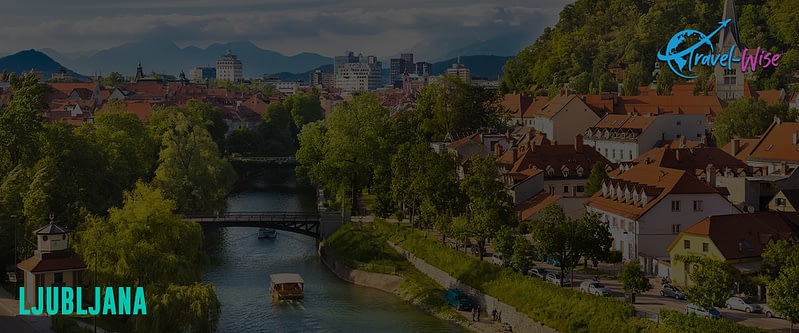
The capital city of Slovenia, Ljubljana, offers a delightful blend of history, architecture, and vibrant culture. It highlights various styles, including Baroque, Art Nouveau, and Renaissance. The city’s most iconic feature is the Ljubljana Castle, perched on a hill overlooking the town. Visitors can take a funicular or hike to the castle to enjoy panoramic views and explore its fascinating history and exhibitions. They can also soak in the lively atmosphere of the Old Town. Among the recognized landmarks are the Triple Bridge and the famous Dragon Bridge.
Ljubljana is also home to numerous museums, galleries, and theaters. The National Museum of Slovenia, the Museum of Modern Art, and the Plečnik House, dedicated to the renowned Slovenian architect Jože Plečnik, are must-visit attractions for art and history enthusiasts.
Preseren Square, named after Slovenia’s greatest poet, France Prešeren, is a bustling hub in the city center. Admire the iconic pink Franciscan Church, relax on the square’s benches, and soak in the lively atmosphere of street performers, musicians, and outdoor events.
Tivoli Park, located just outside the city center, offers a peaceful oasis with lush greenery, walking paths, and charming ponds. It is a perfect place to unwind, enjoy a picnic, rent a bicycle, and explore the park’s natural beauty.
To explore the city uniquely, visitors can take a boat cruise along the Ljubljanica River, join a guided bike tour, or rent a stand-up paddleboard to navigate the city’s waterways.
Triglav National Park

Named after Slovenia’s highest peak, Triglav National Park is a haven for nature lovers. The park encompasses the Julian Alps, where travelers can hike through alpine landscapes and visit Lake Bohinj and the Savica Waterfall.
Hiking is a popular activity in the park, with numerous trails catering to different skill levels. The ascent to Mount Triglav itself is a thrilling challenge for experienced climbers. Along the way, hikers are treated to vistas, crystal-clear lakes, and alpine meadows with diverse flora. The park is also home to various fauna, including chamois, ibex, golden eagles, brown bears, and a wide range of bird species, such as the rare three-toed woodpecker and the chough.
A significant highlight within the park is Triglav Lakes Valley, also known as the Seven Lakes Valley. The valley features a series of emerald-green glacial lakes, a favorite spot for photography and peaceful contemplation. The Soca River also flows through the park, offering various water-based activities.
Scenic drives, such as the Vršič Pass road, provide breathtaking views and access to hidden gems within the park.
Piran and Salt Pans
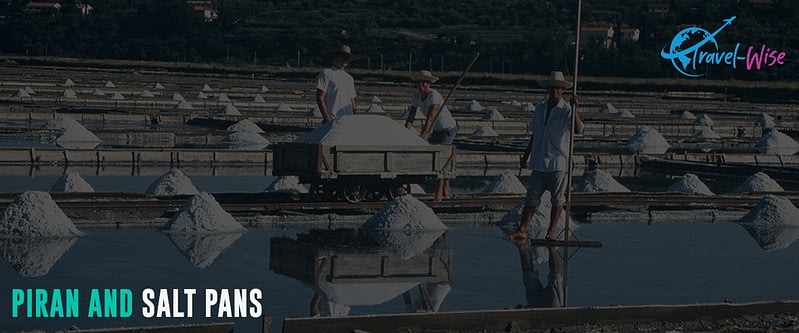
The historical town of Piran is a gem on the Adriatic Sea. It is known for its well-preserved medieval architecture, narrow winding streets, stunning coastal views, and salt pans.
The main attraction in Piran is Tartini Square, a vibrant hub lined with colorful buildings, cozy cafes, and restaurants offering delicious seafood specialties. The old town of Piran also reveals architectural treasures, including the impressive St. George’s Parish Church, which provides panoramic views of the town and the sea from its bell tower. The Venetian-style town walls also offer fantastic vantage points and are worth a visit.
Piran’s coastline boasts beautiful pebble beaches and clear turquoise waters of the Adriatic Sea, perfect for swimming and sunbathing. Some of the water sports activities include paddleboarding, kayaking, and sailing. Boat trips to nearby islands, such as the scenic St. George Island, are also available.
Just a short distance from Piran is the traditional salt pans of Secovlje or Strunjan, producing salt for centuries. Guided tours offer visitors a glimpse into the salt-making process and provide insights into the region’s history, ecology, and cultural significance of salt production.
The salt pans are a place of historical importance and a haven for birdwatchers and nature enthusiasts. The wetlands surrounding the pans attract various bird species, including flamingos, herons, and other migratory birds. Walking and cycling trails around the salt pans allow visitors to discover the area’s rich biodiversity and scenic beauty.
Velika Planina
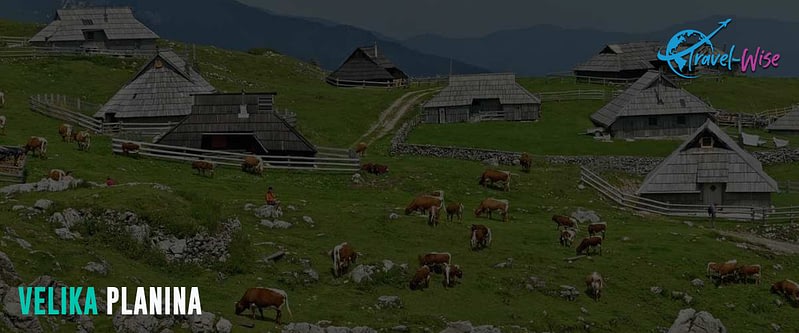
Velika Planina is a vast alpine plateau in the Kamnik-Savinja Alps, offering breathtaking panoramic views and a serene natural environment. It is known for its traditional wooden shepherd’s huts, rolling green meadows, and magnificent mountain peaks. The plateau is accessible by a cable car or a scenic hiking trail, greeted by a tranquil landscape dotted with charming wooden huts, creating a sense of stepping back in time.
One of the main attractions of Velika Planina is the traditional architecture. The huts, known as “kočas,” are distinctive wooden structures with steep roofs with decorative carvings. Some of these huts serve as seasonal homes for shepherds, while others have been transformed into cozy restaurants.
Visitors can explore the plateau on foot, following the well-marked hiking trails. The hikes lead through meadows of wildflowers, grazing cows, and panoramic viewpoints. Velika Planina is also a popular destination for photography enthusiasts. It also offers opportunities for mountain biking, paragliding, and Nordic walking.
During the summer, the plateau comes alive with various cultural events and festivals celebrating local traditions and heritage. In winter, Velika Planina transforms into a winter wonderland, offering opportunities for snowshoeing and cross-country skiing.
Primary Spoken Language(s)
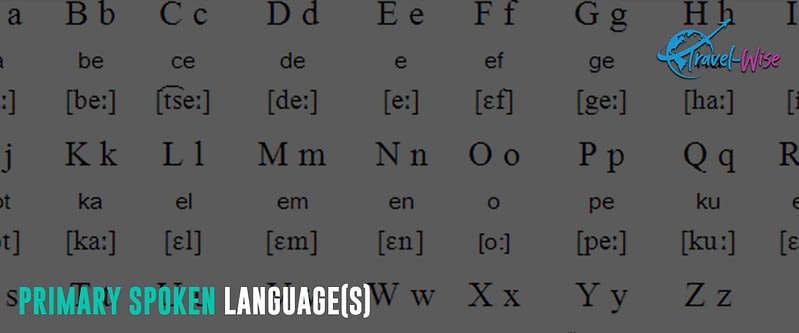
Slovene, or Slovenian, is the official language of the Republic of Slovenia. It is the mother tongue of about 88% of the country’s population. At the same time, most people in Slovenia speak English.
Safety Concerns
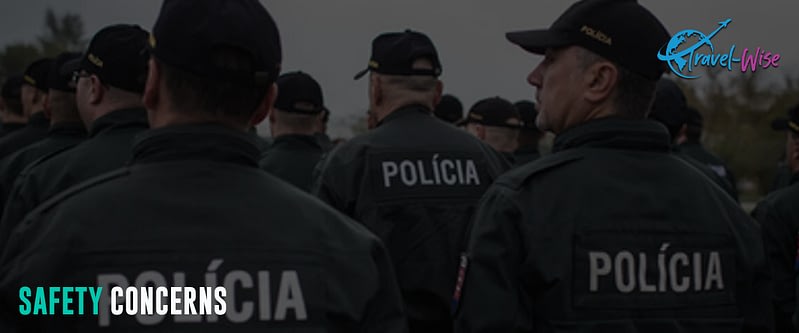
Slovenia is one of the world’s safest travel destinations, ranking 7th out of 163 countries on the 2022 Global Peace Index. The US Department of State also has a Level 1 Travel Advisory for Slovenia. Hence, all travelers can exercise standard precautions when traveling to Slovenia.
All tourists in Slovenia feel safe wherever they go, and the possibility of being a victim of crime is minimal. Nevertheless, not all criminal acts can be foreseen and prevented. Therefore, knowing where to seek help is good if an unfortunate situation arises. In emergencies, dial 113 for police assistance; and 112 for medical, fire, and rescue units.
Safety Recommendations
Although Slovenia has a meager crime rate, petty crimes like theft can still happen. Therefore, all travelers should act responsibly and ensure they travel safely. Below are some safety tips to protect yourself and your belongings from thieves.
- Take care of your belongings and do not leave them in visible places, such as a car.
- Do not carry more cash than you need; store valuable belongings and significant sums of money in hotel safes.
- Avoid dark, quiet streets and isolated areas at night, especially on foot.
- Lock your car and park it in well-lit public parking spaces.
- Ensure you have copies of all your travel documents, plane tickets, passes, bookings, etc. This facilitates identity proving and arranging replacements for any lost or stolen documents.
Natural Disaster
There are no significant threats of natural disasters in Slovenia, except for occasional tremors. Western Slovenia is on an earthquake fault line, which causes earthquakes in the country. Therefore, knowing essential earthquake safety tips during your trip is best.
Slovenia also experiences severe weather, including avalanches, mudslides in mountain regions, and flash floods. It is also best to know that the weather in mountain regions is unpredictable and can change suddenly. Hence, monitor local temperature, check safety conditions, and stick to marked slopes and trails when skiing and hiking. Travelers can also check the European Avalance Warning System (EAWS) when planning skiing trips to Slovenia.
Budget Considerations
Slovenia is considered an expensive destination like the rest of the Balkan countries. But with plenty of affordable options, travelers can explore this beautiful country without breaking the bank.
Accommodation
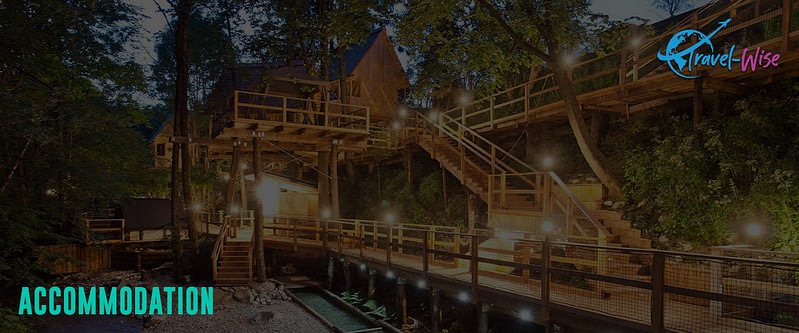
Generally, with advanced booking, travelers can get a bed in a hostel dorm in the capital city of Ljubljana for as low as $26. The rate can go as high as $48 in more touristy places like Bled. Travelers can also get a private room in hostels and budget hotels for $60. Moreover, tourists will find apartments at $125 per night. Make sure to book early to avail yourself of competitive prices.
Depending on the location, visitors can enjoy the comfort of a three-star hotel for between $80 and $160 per night, including complimentary breakfast. They can also splash out on five-star hotels from $240.
Food

Slovenian cuisine is a mix of Italian, Austrian, and Balkan cooking. Spicy sausage, goulash, and schnitzel are widely available in most restaurants. A local favorite for most people on the go is Börek, a flaky pastry filled with meat or cheese. On the coast, plenty of seafood, such as mussels, fish, and squid.
Travelers on a budget can get a fast food combo meal for $6.50, a doner kebab for around $3.30, or a Börek between $2.30 and $3.30. Meanwhile, a regular meal in a restaurant that serves traditional cuisine and pizza costs around $10. Expect to pay between $8 and $14 for a main dish in an Asian restaurant, primarily available in Ljubljana’s capital. Meanwhile, luxury travelers can splash out on three-course meals for $17 or a steak dinner with drinks for $27.
For those planning to cook their food, a week’s worth of groceries costs $40 for basic staples like meat, potatoes, cheese, pasta, and seasonal produce.
Attractions and Transportation
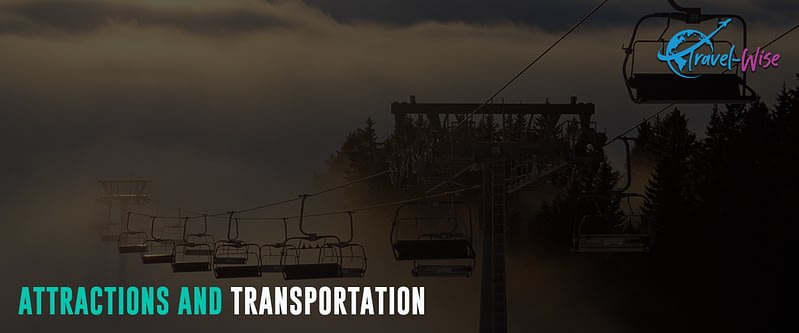
Travelers to Ljubljana can avail of free walking tours. The schedule is twice daily. Though free, don’t forget to tip the guide at the end of the tour. Other free attractions and destinations in Slovenia are the Lovrenc Lakes and Triglav National Park, Slovenia’s only national park. However, some park attractions and activities require small fees between $2.20 and $5.50.
Visitors can also tour the Ljubljana Castle for $14.20, including a roundtrip funicular train visit and guided tour. Other worthy tours are at Skocjan Caves for $20, Rogatec Open-Air Museum for $3.30, or skiing for $10.
Public transportation can be the best option for getting around Slovenia for budget travelers. The prices vary by city but expect to pay at least $0.80 for a standard adult ticket. On the other hand, travelers who want more flexibility and privacy can rent a car for as low as $35 on a multi-day rental.
To save, travelers can get the Ljubljana Card. It is available at $39.40, valid for 24 hours, $48.10 for 48 hours, and $53.60 for 72 hours. The card allows a free bus from and to the airport, public transport travel, a funicular ride to Ljubljana Castle, and a tourist boat cruise on the Ljubljanica River. Moreover, the Ljubljana Card includes free 4-hour bicycle hire, a guided city tour, and admission to over 20 attractions, including the Ljubljana Castle.
Average Two-Week Cost

Budget travelers in Slovenia can live with a $65 daily budget or $910 for two weeks. The budget covers the costs of sleeping in hostel dorm beds; grocery shopping and cooking your food; taking public transport; availing the Ljubljana Card, and mainly doing free activities.
On the other hand, mid-range travelers spend at least $160 daily or $2240 for two weeks. It includes staying in a three-star hotel, taking occasional taxis, dining in local restaurants, doing a few paid activities, and visiting several destinations.
Lastly, travelers can enjoy luxury and privacy in Slovenia for $340 daily or $4760 for two weeks. It includes staying in five-star hotels, splashing out on meals, and renting a car for transport. They can also avail of all the paid tours and activities they want. So for them, the sky is the limit for travel.
Customs And Import Restrictions
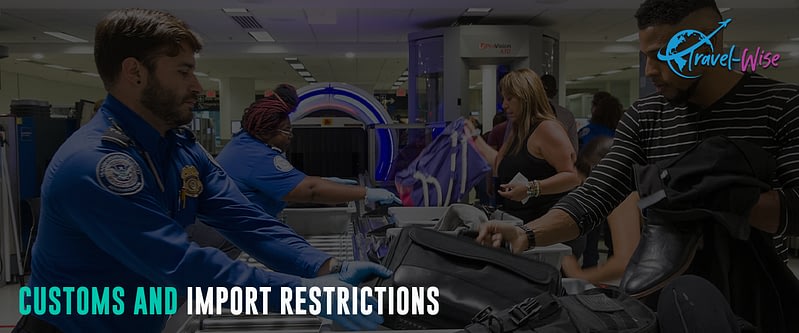
Slovenia is a member of the European Union and the Schengen Area. Hence, EU citizens can travel to Slovenia without customs or tax restrictions for personal luggage and items when entering and exiting the country. However, tobacco products and alcoholic beverages are subject to limitations.
EU citizens can bring to Slovenia a maximum of the following:
- Eight hundred cigarettes, 200 cigars, or 1 kilogram of smoking tobacco.
- Ten liters of spirits or drinks with over 22 % alcohol content or 20 liters of alcoholic beverages with less than 22% alcohol content.
On the other hand, citizens of other countries over 17 years old can bring Slovenia a maximum of:
- Two hundred cigarettes or 50 cigars, or 250 grams of smoking tobacco.
- One liter of spirits with over 22% alcohol content or 2 liters of alcoholic beverages with less than 22% alcohol content.
They can also bring tax-free gifts at a maximum of €150 for passengers under 15 and €430 for ages beyond 15 for air and sea transport or €300 for land transport.
There are no restrictions on bringing cash into Slovenia if the traveler is an EU citizen. Contrarily, other nationals can carry a maximum of €10,000 in money, and more significant amounts must be declared to customs.
Check the Slovenian Customs Administration for the complete customs and import restrictions list to avoid hassles and delays during your trip.
Restricted Imports
Slovenia restricts imports of some goods and products and may require permits from relevant authorities. These include:
- some plant and plants products
- protected animal and plant species
- pets and animals
- medications
- food of animal origin
- Import, export, or transit of weapons, ammunition, and explosives is allowed based on authorizations granted by the Ministry of the Interior.
- Explosives and pyrotechnics
Prohibited Imports
The Customs Administration of Slovenia also restricts imports and exports of certain products. These include:
- Plants and crops such as vitis, citrus, bonsai, grass, and potatoes
- Plants from the USA, Canada, and China have root clods, roses, conifers, chestnut, oak, apple, quince, pear, cherry, plum, and other stone fruit trees.
- Counterfeit goods and products
- Category 2 and 3 of fireworks
- Cultural goods
- Illegal drugs
Climate Considerations
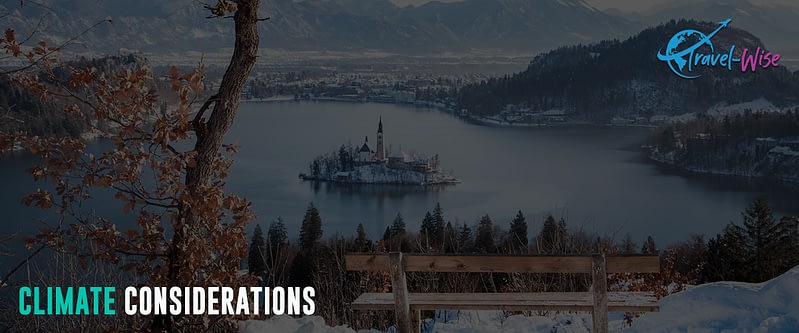
Slovenia has three varied climate types: Mediterranean in the coastal regions, Alpine in the high-altitude areas, and Pannonian in the northeast. The average summer temperatures fluctuate between 23 °C and 30 °C from June to August. Winter from December to February is frosty, with temperatures between -6°C and 7°C. On the other hand, spring (March to May) and autumn (September to November) bring mild weather at 13°C to 16°C.
The coldest parts of Slovenia are Gorenjska and Bled, while the warmest is Obalno-Kraska. Meanwhile, rainfall is heaviest during October and November.
Primary Transportation Options
Slovenia is easily accessible from all European neighboring countries as it has good road and rail connections. Slovenia also has daily flights from many European cities and other major cities worldwide. Since Slovenia is a coastal country, travelers can also get to Slovenia by sea.
Air

Travelers can enter Slovenia by air through Ljubljana Jože Pučnik International Airport (LJU), Maribor Edvard Rusjan Airport (MBX), and Portorož Airport (POW). LJU, the country’s central aviation hub, has several regular flights from European cities. It also connects Slovenia to other major cities worldwide, with various international airlines flying there.
Boat
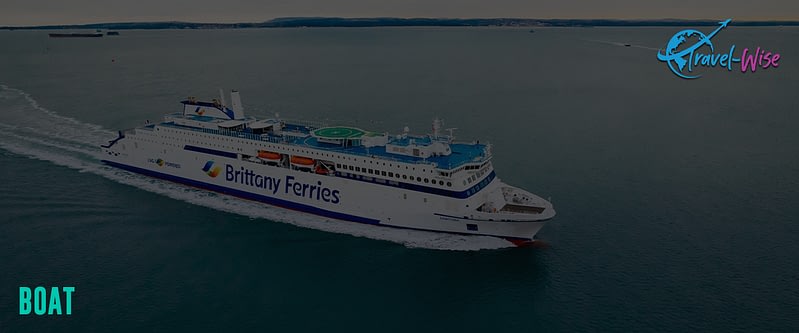
Being a coastal country, Slovenia has several ferry companies operating between Piran Port and the neighboring Trieste and Venice ports of Italy. Venezia Lines connects Venice in Italy to Piran Port on a 2-hour and 45-minute ferry ride every Saturday. Meanwhile, the Liberty Lines Fast Ferries links Slovenia to Italy on a 2-hour and 15-minute ferry ride 4x a week via Piran Port to Trieste. Liberty Lines Fast Ferries also runs between Piran Port and Porec Port in mainland Croatia. Bled, a town on the Julian Alps, is also best explored by boat.
Rail

Train travel is one of the best and most comfortable ways to travel to and around Slovenia. Eurail and Slovenian Railways provide several daily trips connecting Slovenia to other European cities.
The national railway company, Slovenian Railways, also connects major cities and destinations in Slovenia. Aside from the comfortable carriage, travelers can also take their cars through Motorail and go through Slovenia’s longest tunnel. It passes through Mt Črna Prst leading into Bača Valley, from the Gorenjska region to the Primorska region, specifically from the Bohinj Valley to the Posočje Valley.
Visitors can also take an adventure ride by taking the Museum Train, a steam engine train that travels on a centuries-old railway from Jesenice to Kanal on the River Soča.
Bus

Bus connections in Slovenia are good, with an efficient network of coach schedules from the neighboring European cities. Slovenia has direct coach lines from as far as Sweden or Denmark. Travelers can check international coach connections with Ljubljana and find information on timetables.
From Ljubljana, buses take travelers to almost every Slovenian town, city, and tourist destination. Travelers can check bus connections and timetables when planning to take bus transport during their trip.
A famous company that connects Slovenia to other European cities is FlixBus. Travelers can also travel to and get around Slovenia on Nomago buses.
Car

Travelers can rent a car at local and international rental agencies available at the airport and in towns. Rental rates are $35 daily and vary according to vehicle type and model. Aside from cars, travelers can also rent a bicycle in Ljubljana through its Tourist Information Centers. Bicycle use is free for up to an hour through the Ljubljana BicikeLJ bicycle-sharing system. Moreover, travelers with the Ljubljana Card have free 4-hour bicycle hire.
Like most of continental Europe, Slovenia drives on the right-hand side of the road. It is also best to note the obligatory use of dipped (low-beam) headlights during daytime driving in Slovenia. Moreover, vehicles not exceeding 3.5 tons must have a vignette or e-vignette available online from the official website, EVignette, to drive on all Slovenian motorways and expressways operated by toll road operators.
For 24-hour road assistance and towing, check out Avto Moto Zveza Slovenije (AMZS, or call 1987 if you break down.
Taxi
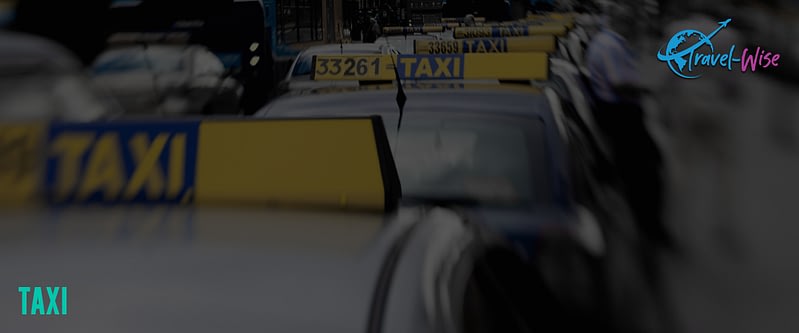
Taxis are widely available in the capital city of Ljubljana. Depending on the taxi company and service, they charge between $0.90 and $1.65 as the starting fee and from $0.80 and $1.90 per excess kilometer. For example, a taxi ride from Ljubljana Jože Pučnik Airport to Ljubljana city center costs between $22 and $49.
Note that taxi fares and charges are lower when ordered by phone. In any case, enquiring about the fare and agreeing on the price before the ride is advisable.
Start Trip Planning
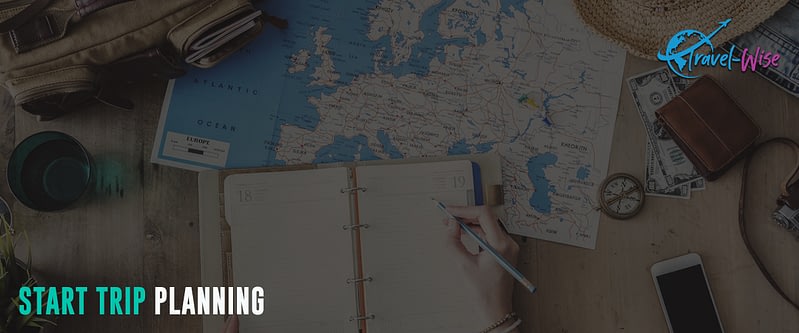
Travel-Wise is made from the ground up to help people travel more, break down the barriers that make it tough to get going, and start your journey as painlessly as possible. Bookmark our other Country Guides to help kick-start your research for future travels. We also offer templated itineraries from our staff and community that help serve as a building block for your trip plans. Alternatively, we also utilize AI to offer a way to generate itinerary ideas. This saves much time just getting you up and running with a template. From there, you can use the trip planner to create your customized itinerary, invite friends and family for collaboration, find others from Travel-Wise to join the trip, book and track important information, journal, and share your experiences at the end or along the way!

